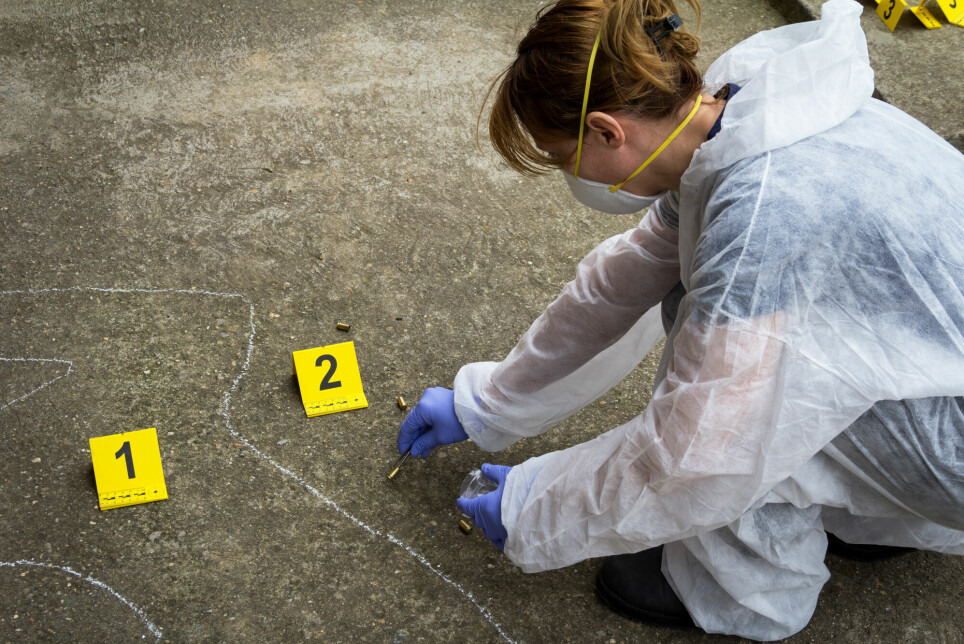
Subgroup of psychotic patients at high risk of becoming violent, researchers believe
In the aftermath of murder and violence, a perpetrator’s mental state – whether they are psychotic or have psychopathic traits – is commonly discussed. New Norwegian brain research may indicate that both are sometimes at play.
'The perpetrator was psychotic at the time of the crime.'
This is a phrase we often hear in forensic psychiatry and crime journalism.
We might therefore find it easy to believe that people who have a psychosis are dangerous. Previous research has also shown that this may be the case.
Some become violent
Of the approximately two percent of individuals who develop a psychosis during their lifetime, some do have an increased risk of becoming violent.
But now a new study suggests that the combination of psychosis and psychopathy is what leads to serious violence.
The study suggests that a subgroup of psychosis patients are at high risk of becoming seriously violent. In addition to psychosis, they have antisocial or psychopathic traits, according to the lead author of the new scientific article, Natalia Tesli.
Tesli is a PhD candidate at the Norwegian Centre for Research on Mental Disorders Research at Oslo University Hospital and the University of Oslo.
Tesli uses images of the brain to study violence perpetrated by people with severe mental illness.
She believes we have to be careful in interpreting these findings.

“This study is small for a brain study using magnetic resonance imaging (MRI). The study needs to be repeated with a lot more participants,” she says.
Studied 300 brains
In total, Tesli has studied the brains of 300 subjects, divided into four groups.
I found that people with both psychosis and a history of violence have more extensive anatomical abnormalities than do people with psychosis but without a history of violence.
Twenty of the brains studied belong to people being held in custody in Norway. That is, they are considered particularly dangerous offenders, where ordinary and time-limited prison sentences are not sufficient to protect society.
Twenty-eight people were violent and had a psychosis diagnosis.
In addition, she looked at 58 psychosis patients without a history of violence.
The rest of the brains she studied were from healthy individuals.
Studied the most dangerous offenders
I found that people with both psychosis and a history of violence have more extensive anatomical abnormalities compared to individuals with psychosis but without a history of violence.
Tesli compared the brains of people with a psychosis diagnosis who had committed violence with the brains of people who had been violent, but not in psychosis.
In addition, she has studied the brains of psychosis patients who have a serious history of violence and who live in high security wards.
Serious violence in this context is defined as murder, attempted murder, assault or sexual crimes.
Found widespread structural differences
Tesli has been particularly interested in the brain’s white matter.
White matter consists of bundles of nerve fibres that connect brain cells in different areas of the brain. These are important for conveying information such as emotions and thoughts in the brain. All of these influence our behaviour.
She found big differences between violent psychosis patients and the non-violent patients with psychosis.
“I found that people with both psychosis and a history of violence have more extensive anatomical abnormalities compared to individuals with psychosis but without a history of violence.”
No differences between violent groups
The researcher thinks it is interesting that two groups – people with psychosis and a history of violence, and prison inmates without psychosis but with serious violent convictions – had the same level of psychopathic traits.
The researcher found no differences between the brains of the two violent groups.
Tesli also found a connection between the psychopathic scores and abnormalities in the white matter of the brain. Psychopathic traits were measured through an instrument called the Psychopathy Checklist, which is often used in research.
Psychopathic traits were associated with poor connections in the corpus callosum. This is a thick bundle of nerve fibres that connect the right and left brain hemispheres.
Differences seen at the group level
Tesli says that the researchers found significant discrepancies between individuals who have committed violence and those who have not, including in areas of the brain that do not handle emotions.
It’s important to remember that the differences found by the researchers are at the group level. You can’t transfer these differences to the individual level, she says.
“We aren’t able to say, using today’s brain imaging technology, that a particular person has major brain abnormalities related to violence,” says Tesli.
Almost impossible to predict murder
She believes it is important to do more research in this area.
“We need better mapping tools that can help clinicians assess whether a mentally ill person might become violent,” Tesli says.
The currently available tools are based on clinical and sociodemographic factors. They tell us something about the disorder, as well as about economic and social conditions.
“They can be good for predicting whether a person with a mental illness has a low risk of being violent. But predicting whether a person has a high risk of committing a serious crime like murder is almost impossible today,” says Tesli.
Once we learn more about underlying brain mechanisms, we may glean more information from brain imaging. She believes we might then eventually be able to better predict who could become violent.
“But of course that raises a lot of ethical concerns about how such knowledge is used,” she says.
Could reduce stigma
On the other hand, Tesli hopes that the knowledge that she and her colleagues have gained through this study will be able to help reduce the stigma of people suffering from psychotic disorders and other serious mental illnesses.

“The media often portrays violence as black and white. Either you’re violent because you have antisocial traits or you’re violent due to active psychosis. But there are a lot of indications that it may be both. We might be talking about a subgroup of psychosis patients who can become violent, not all psychotic individuals,” she says.
Stress might change the brain
Psychologist and researcher Pål Grøndahl has researched violence, aggression and murder. He also has extensive experience as a forensic psychiatric expert.
He thinks it is hard to say what these findings tell us.
“Are the deviations in white matter in violent and psychotic persons a result of a difficult life or are they the cause of the violence? We know that people with psychosis are more often exposed to violence and other stresses, and that this can lead to changes in the brain.”
Grøndahl believes that the study should be repeated on a significantly larger number of people in order to be able to speak more definitively about any differences between violent or non-violent individuals.
We know that personality traits are stable in us. We can’t do anything about them, but most of us can choose how we behave.
Interesting study
Marianne Kristiansson, a Swedish forensic psychiatrist, concurs. She also has a long career in forensic psychiatry.
She has read the study and comments, “The study is interesting, especially in that researchers found the same differences in the brains of people who are violent, regardless of their diagnosis.”
Kristiansson nevertheless believes that this research needs to be repeated in other studies.
She has done research on psychopathic patients using modern imaging techniques and found changes in the brain in areas that process emotions.
We know that people with psychosis are more often exposed to violence and other stresses, and that this can lead to changes in the brain.
Psychopathic individuals process things more in cognitive areas of the brain than in emotional areas, according to Kristiansson.
What will be done with the knowledge?
In traditional Norwegian criminal law, the thought is if you have been convicted for violence 18 times, ordinary punishment does not help and a custodial sentence could be imposed instead, she explains.
In the future it is conceivable that first-time offenders convicted of violent acts could be required to have an image of their brain taken for abnormalities, according to forensic psychiatrist Randi Rosenqvist.
“Some people may think it’s important to catch young people with a brain defect early and lock them up. This is more relevant in American justice. I don’t think it will be relevant in Norway or Europe right away,” she says.
Most people have a choice
Nor does Rosenqvist want to head in that direction.
Exhibiting psychopathic traits does not mean that you will commit criminal acts, she emphasizes.
“We know that personality traits are stable in us. We can’t do anything about them, but most of us can choose how we behave,” says Rosenqvist.
Reference:
Natalia Tesli et.al.: White Matter Matters: Unraveling Violence in Psychosis and Psychopathy. Schizophrenia Bulletin Open, 2020.
———































